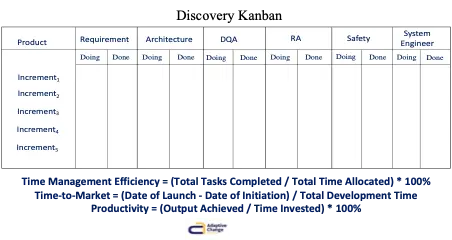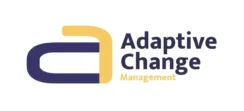Experience the ‘light bulb’ moment, understanding why Business Agility is a crucial game-changer. The effective time management offered by Socioeconomic Management Systems is their key leverage.
Time optimization is one of the prioritized building blocks, given the recurring demand in almost every industry sector: ‘Save me time.’
Let us first define Business Agility
Business agility refers to an organization’s ability to respond to changes quickly and effectively in the internal and external business environment. It encompasses the capacity to adapt strategies, operations, and structures in a timely manner, enabling the organization to thrive in the face of uncertainty, competition, and evolving market dynamics. Business agility involves fostering a culture of innovation, flexibility, and collaboration, allowing companies to swiftly capitalize on emerging opportunities and navigate challenges while maintaining a focus on delivering value to customers within the required time.
These structures are designed to bolster the focus on economic thinking at all levels
- It's crucial to incorporate your vendors into the system to reduce both internal and external reaction time and duration.
- The emphasis on economic thinking across all levels is harmonized with your enterprise's objective of retaining and attracting customers.
- This approach intentionally empowers the self-activation and continual enhancement of your organization.
- Business Agility serves as the cornerstone for enhancing the robustness of your sustainability system.
- Enactment represents the sole process through which organizational structures directly interact with the external environments.
Function of time
Time is a fundamental dimension that plays a crucial role in various aspects of life, including physics, philosophy, psychology, and everyday living. It gives us the opportunity to learn, grow, and develop new skills, allowing for the accumulation of experiences, knowledge, and wisdom that contribute to personal and professional development.
Time is closely linked to the concept of causality, as events occur in a sequential order over time. It allows us to understand the relationship between cause and effect and helps us make sense of the natural world.
We also incorporate the function of time in adaptive changes, recognizing its critical influence on various aspects such as project management, resource allocation, and product development. Effective time management is intricately linked with a company’s structures, impacting workflow, efficiency, and overall productivity. Successful time management practices, including the establishment of clear timelines for each project phase, are closely tied to the organizational time structure. A company with a well-defined hierarchical structure and streamlined communication channels is more likely to execute projects efficiently and meet deadlines, unlike a company with ambiguous structures. This can be exemplified practically through the preference for near-shoring over off-shoring, where near-shoring activities support time savings in product development systems. This is why we avoid exclusively focusing on the team-first approach and instead emphasize scaling knowledge work. Change is an ongoing process, demanding that we continuously listen, learn, and adapt while remaining steadfast in our clear purpose and thriving daily business.
Change poses particular challenges in the sustainability realm, with only 7% of such efforts achieving their targets-a figure that dwindles to just 1% in Europe, where regulatory requirements set a higher bar. A conceptual framework can be established to illustrate the importance of time in various organizational processes.
One way to conceptualize the function of time in organizations is to consider the following components:
Time Management Efficiency Formula: This formula can be designed to measure how efficiently time is managed within an organization, taking into account factors such as task completion time, resource allocation, and project deadlines. It could be represented as: Time Management Efficiency = (Total Tasks Completed / Total Time Allocated) * 100%
Productivity and Time Allocation Formula: This formula can assess the productivity of groups in relation to their time allocation. It would involve calculating the output or results achieved in a given period compared to the time invested. Productivity = (Output Achieved / Time Invested) * 100%
Time-to-Market Formula: This formula focuses on the time it takes for a product or service to be developed and launched in the market. It considers various stages of development, production, and distribution. It can be expressed as: Time-to-Market = (Date of Launch – Date of Initiation) / Total Development Time
These formulas are conceptual and may require customization and refinement based on the specific context and objectives of the organization. They can serve as a starting point for understanding and evaluating the function of time within the change framework.

Optimize Resources by Using High Tech
Optimize your resources by centralizing the management of all your planning, resource allocation, and monitoring using high-tech solutions such as AI. Use your resources more effectively and adapt swiftly to unexpected changes to maintain interdependency systems. This reliance on interdependency systems in adaptive changes creates connections among management, middle management, group leads, and experts. Every adaptive change initiates from the top, ensuring the transfer of capabilities in the right direction and demonstrating appreciation for knowledge workers at all levels.
Organize sessions where teams can collectively define and discuss terms such as “sustainability” and “adaptive approach” in relation to your company’s objectives. Encourage participants to share real-world examples and experiences. By incorporating these interactive elements into your corporate culture, you can effectively demystify buzzwords, cultivate a deeper understanding of sustainability, and promote a proactive approach to achieving your company’s zero waste goals. This is also evident in organizational changes. The better you avoid buzzword bingo but ensure clarity through understandable language and communication for understanding, you save time in developments because there is no Babylonian confusion of language.
Utilize the latest modern technology to foster an environment that optimizes costs and enables seamless communication and collaboration, thus ensuring timely product launches by emphasizing the role of time in the development process. This approach emphasizes the timely completion of tasks and meeting deadlines. Understanding and effectively managing the function of time in these various business dimensions can significantly contribute to overall success and shorten the Time-to-Market of product development. Just remember every successful agile change is handled by management.
Enterprises need more from their employees than ever. So, companies must simplify the product development process, ensure economic responsibility and accountability, as well as individual accountability. This means decisions are made at the right points of organizations closest to the action, risk, uncertainty, and unpredictability. Karl Marx once mentioned: “Marxism is a revolutionary worldview that must constantly struggle for new insights, that abhors nothing so much as ossification in once-valid forms, that is best expressed in the intellectual clash of arms of self-criticism.”
Leadership Requires a Set of New Social Skills
The best way that management, portfolio management, and middle management roles support fast change to Business Agility is, among others, by addressing cognitive biases. All of us have them, but managers in any role can be trained to be more aware of their biases. Overcoming cognitive biases is an important endeavor, especially in decision-making processes. While it may not be possible to completely eliminate cognitive biases, there are strategies that can help managers mitigate their influence. In decision-making and analysis, it’s essential to be mindful of this fallacy and to avoid drawing conclusions based solely on the temporal sequence. Evaluating causality requires a thorough understanding of the relevant factors and evidence to support any claims of cause and effect. Being aware of the fallacy of false cause helps promote critical thinking and the development of more accurate and reliable conclusions. Understanding these biases is essential, as they can significantly impact decision-making processes, leading to suboptimal outcomes and potentially hindering individual and organizational growth.
Familiarity bias refers to the tendency of individuals to favor what is familiar or known, often leading to a preference for things, ideas, or people that one has encountered before.
Framing bias refers to the cognitive bias where individuals make decisions based on how information is presented, or “framed,” rather than on the actual information itself. The way information is presented can significantly influence perceptions and choices, leading individuals to react differently depending on how the information is framed, even if the core information remains the same.
Confirmation bias is a cognitive bias that involves interpreting new evidence as confirmation of one’s existing beliefs or theories. This bias leads individuals to favor information that supports their preconceptions, while ignoring or downplaying contradictory evidence.
Yesterday’s logic bias refers to the cognitive tendency to rely heavily on past experiences, approaches, or solutions, even when they may no longer be applicable or effective in the current context. This bias can hinder individuals and organizations from adapting to new situations, advancements, or changes in the environment, leading to stagnant thinking and limited innovation.
Fallacy of false causality – this fallacy occurs when one assumes that because event B follows event A, event A must be the cause of event B. In decision-making and analysis, it’s essential to be mindful of this fallacy and to avoid drawing conclusions based solely on the temporal sequence.
False causality bias is a term that typically refers to the cognitive bias known as the “illusory correlation” or the “illusory relationship.” This bias involves the erroneous perception of a causal connection between two unrelated or loosely related events or circumstances. It occurs when individuals mistakenly believe that one event causes another, despite the absence of a genuine cause-and-effect relationship.
In decision-making and analysis, it’s essential to be mindful of this fallacy and to avoid drawing conclusions based solely on the temporal sequence. Evaluating causality requires a thorough understanding of the relevant factors and evidence to support any claims of cause and effect. Being aware of the fallacy of false cause helps promote critical thinking and the development of more accurate and reliable conclusions.
A Short Example in R&D
Many in R&D tend to use the requirements specification as absolute, rather than as a list of hypotheses concerning functionality that might add value to customers. Instead, we need to treat each requirement as a hypothesis, quantify the intended effect or outcome, and then iteratively develop the requirement to gather evidence that the hypothesis is valid. And, of course, we should halt the development of a feature when the data shows that there’s no effect. To quote Peter Drucker, efficiency is doing things right, effectiveness is doing the right things. R&D has traditionally focused on efficiency, but in a digital world, it needs to focus on effectiveness instead.
How Can Sustainable Business Agility Secure Innovation Cycles?
We make a difference by thinking outside the box. Business Agility must achieve elasticity, recovery, and variety mechanisms. Managers should, in this fast-paced, modern, digital daily life, avoid some old-fashioned classic spirit. Situational awareness nowadays requires technology to rapidly collect, process, deliver data to the edge, and the capability to turn data into decisions.
These approaches can, for example, sustainably ensure your innovation cycle because of the saved time. The scaling of innovation cycles, for instance in product development systems, is an important part of any business strategy. It is all about reducing costs in your delivery systems. By scaling adaptive innovation and finding the right adaptation zones to reduce transaction is part of the Adaptive Change Management architecture. Indeed, to bring your adaptive changes fast to reality, it should be accompanied by robust innovation cycles to reduce transaction costs.
Advantages
Key Advantage
Unlock the potential of streamlined operations that empower your teams to work more effectively while reducing time spent on unproductive tasks.
Major Edge
Gain quick adaptability in response to new market opportunities, ensuring your business strategies are always aligned with dynamic industry demands.
Fill out the form below, and we will respond within 48 hours.
Contact Us
We Shape The Future!
valuable. adaptive. innovative.
Our path of cooperation: Building trust, fostering relationships, and delivering value.
Get In Touch
- +381 65 6251 806
- +43 3322 43215
- +43 3322 43215
- [email protected]
Hours
- Mon-Fri 9:00AM - 5:00PM
- Sat 10:00AM - 2:00PM
Call us

+43 664 66 53 975

+381 65 6251 806

+43 3322 43 215

+43 3322 43 215
Trust is one of our most prized assets! We don’t make personal data available to other third parties for use.

